A New Era for PLG: Introducing the Age of Connected Work
The Age of Connected Work ATTACH
the Age of Connected Work, software has become a fundamental utility powering our working lives—just like water, electricity, the internet, and mobile broadband. We used to “own” and then “rent” software; now we simply use it.
In the past we might’ve emailed back and forth to find a time, traveled to meet in person, and jotted down notes in a journal. Now that meeting is scheduled via Calendly, automatically logged as a CRM record, takes place via Zoom, gets recorded in Gong, and ends with a follow-up assisted by Grammarly. It’s a fully connected workflow powered by automation that allows us to be more productive, make fewer mistakes, and collect valuable data.
PLG must adapt to our new context. PLG is no longer just an end-user focused growth model. In fact, with the rise of automation, AI, and APIs, the users of a product are increasingly other products rather than people.
Datadog’s products are inherently open, available on the AWS, Azure, and GCP marketplaces and have 450+ integrations out of the box.

How did we get here? ATTACH
it creates value by communicating with other software—even when people aren’t logged in. People access it where they’re already spending time, whether that’s in-browser, in-app, a mobile device, or even a connected machine. And the cost flexes up or down based on usage.
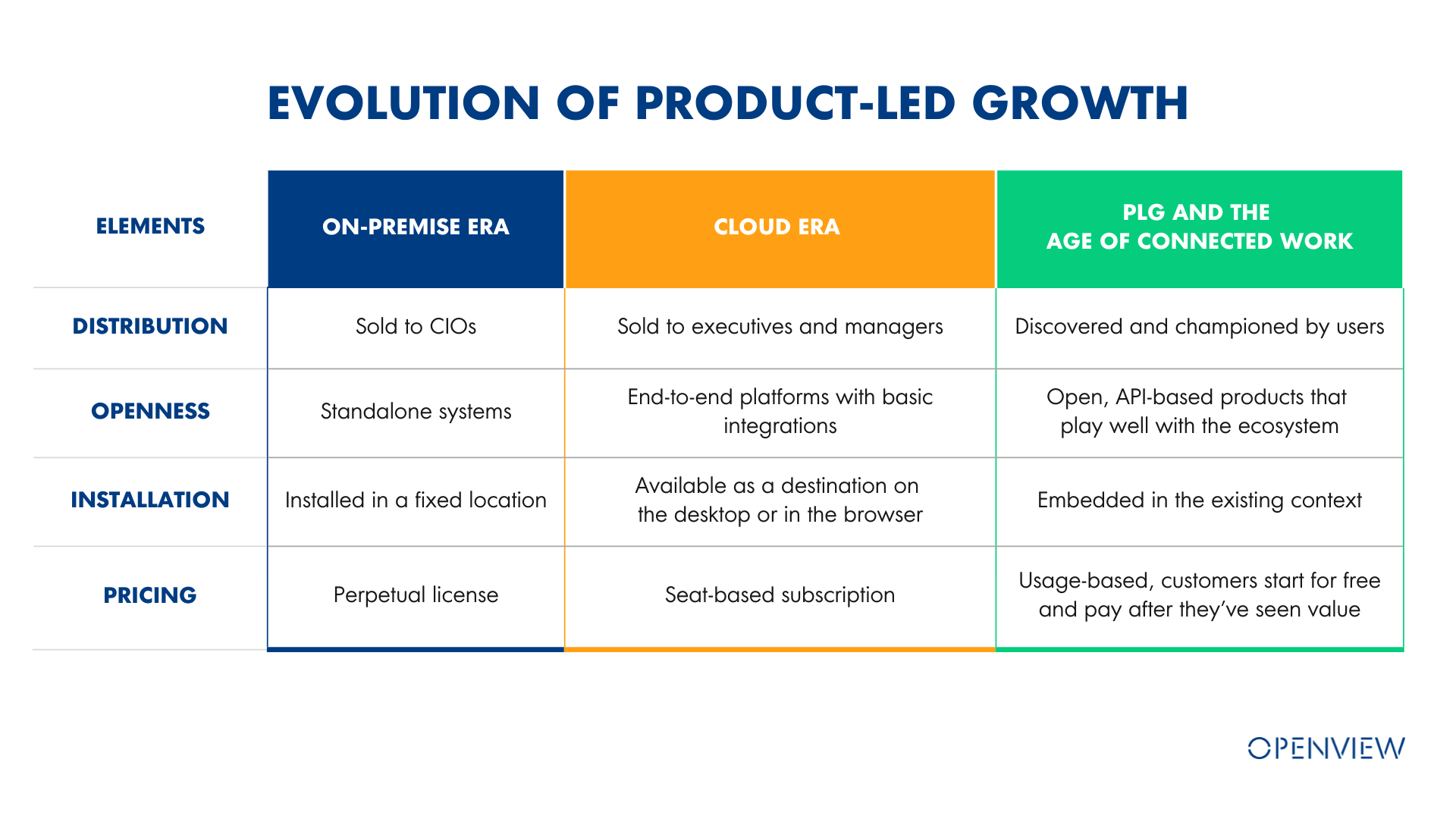
Trend 1 – Software has become core infrastructure
Large companies support an average of 187 apps, up from 129 in 2018, according to Okta’s Businesses @ Work Report. The cloud infrastructure market reached $178 billion in 2021, up by almost $50 billion compared to 2020.
Trend 2 – Work happens everywhere
People are working from home, but also in the office, in their car, at a cafe, in a co-working space and even increasingly obscure places like while waiting in a doctor’s office.
Trend 3 – Engagement with software sets the tone, buyers follow users
For too long, software development has been restricted to an elite group with access to special training and equipment.
the users moved closer to software with condition-setting interfaces, smart forms, and API-based connections. We are all becoming developers
11 PLG Principles for the Age of Connected Work ATTACH
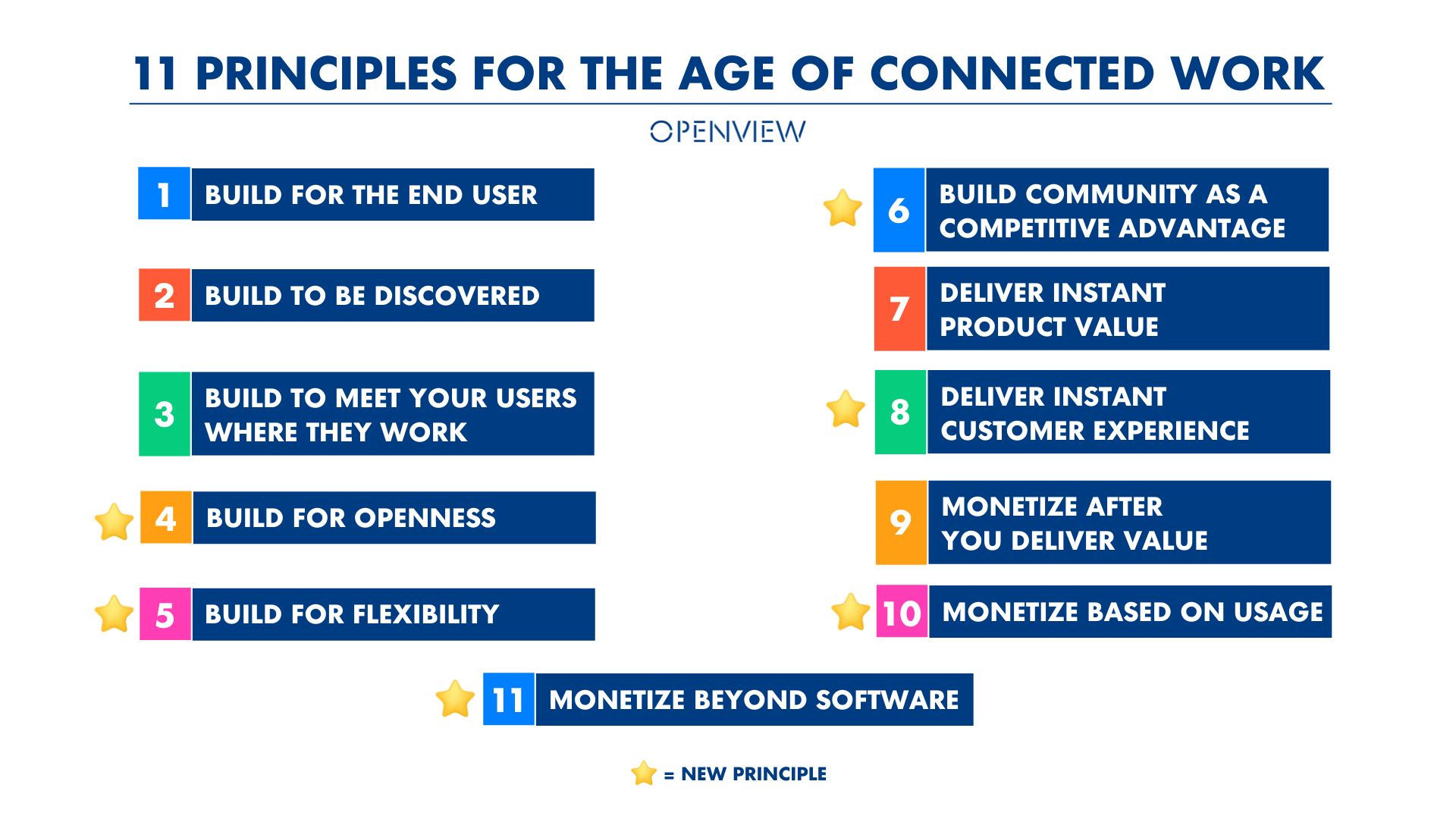 We’re often asked “How do we become PLG?”
You don’t need to adopt all 11 principles to be PLG, but use as many as are applicable for your market to build a defensible competitive advantage for your business and win in the long-term.
We’re often asked “How do we become PLG?”
You don’t need to adopt all 11 principles to be PLG, but use as many as are applicable for your market to build a defensible competitive advantage for your business and win in the long-term.
#1: Build for the end user
Principle: End users are the new kingmakers. Provide real value for your end users, not just for executive buyers.
ICYMI: Meet Tope Awotona, Calendly’s Founder and CEO
#2: Build to be discovered
Software used to be marketed and sold. Now products are bought, not sold. Users find products when they need them through SEO-optimized templates (Zapier, Miro), how-to guides (Twilio, Ahrefs), and ungated free tools (SafetyCulture’s checklists, HubSpot’s Website Grader).
Principle: Be easily discoverable by users in their moment of need.
More by Wade: Your Guide to the Hottest New Role in Software: Sales-Assist
#3: Build to meet your users where they work
You used to go to software when you needed to do a specific task. If you were in HR, you went to Workday. If you were in sales, you went to Salesforce. Software was a destination that had to be sought out.
Now software lives in your context; it lives wherever you live rather than being a destination. Grammarly, the writing assistant, gets used as a Chrome extension because most of your writing happens in the browser. Toucan, the language learning app, automatically translates a set of words or phrases whenever you visit a webpage, helping people learn a new language without even trying. Speechify, the text-to-speech app, gets downloaded as a mobile app since that’s where people encounter the most written content. Even CRM products are being built to be used in Slack (Rattle) or in their note-taking apps (Dooly.ai).
Principle: Don’t force people to change their workflow in order to use your product. Instead, meet your users where they work or experience pain.
#4: Build for openness
Software used to be a walled garden. Companies were relatively standalone systems. Integrations with other products were optional and required substantial costs to build. Now software can’t be a walled garden. Users are going to choose what they want and you need to play well with others.
API-first companies embody this principle fully. In a real sense, openness is their product. Whether it’s Contentful (digital content), Twilio (communications), Auth0 (identity), Plaid (financial services), project44 (shipping and logistics), Deliverect (restaurants) or Checkr (background checks), they’ve built large businesses on the basis of connecting data and applications.
Principle: Make your product open by default. Allow people to connect your product to fit into their specific context.
#5: Build for flexibility
If your products are truly open, your users can build it themselves.
You don’t need to be everything to everyone if you’ve built an open, flexible product. Now products give ordinary users the tools to become developers, letting users build perfectly customized solutions for their own needs.
Principle: Give users the tools to customize your product for their exact needs. Be flexible, so your users can be creative.
More from Howie: From the Bottom Up—Airtable’s Approach to Distribution and Adoption
#6: Build community as a competitive advantage ATTACH
When users have a hand in creating your product, they feel a sense of ownership in the brand itself. These creators show off what they’ve built, teach others how to do it, and foster community around the product. Now users are the brands. People respond to people, and look to folks they trust for advice. Forward-thinking companies cultivate community as their core differentiator. Community isn’t just about creating another Slack channel. It’s about convening and connecting your target audience to help members achieve their own goals.
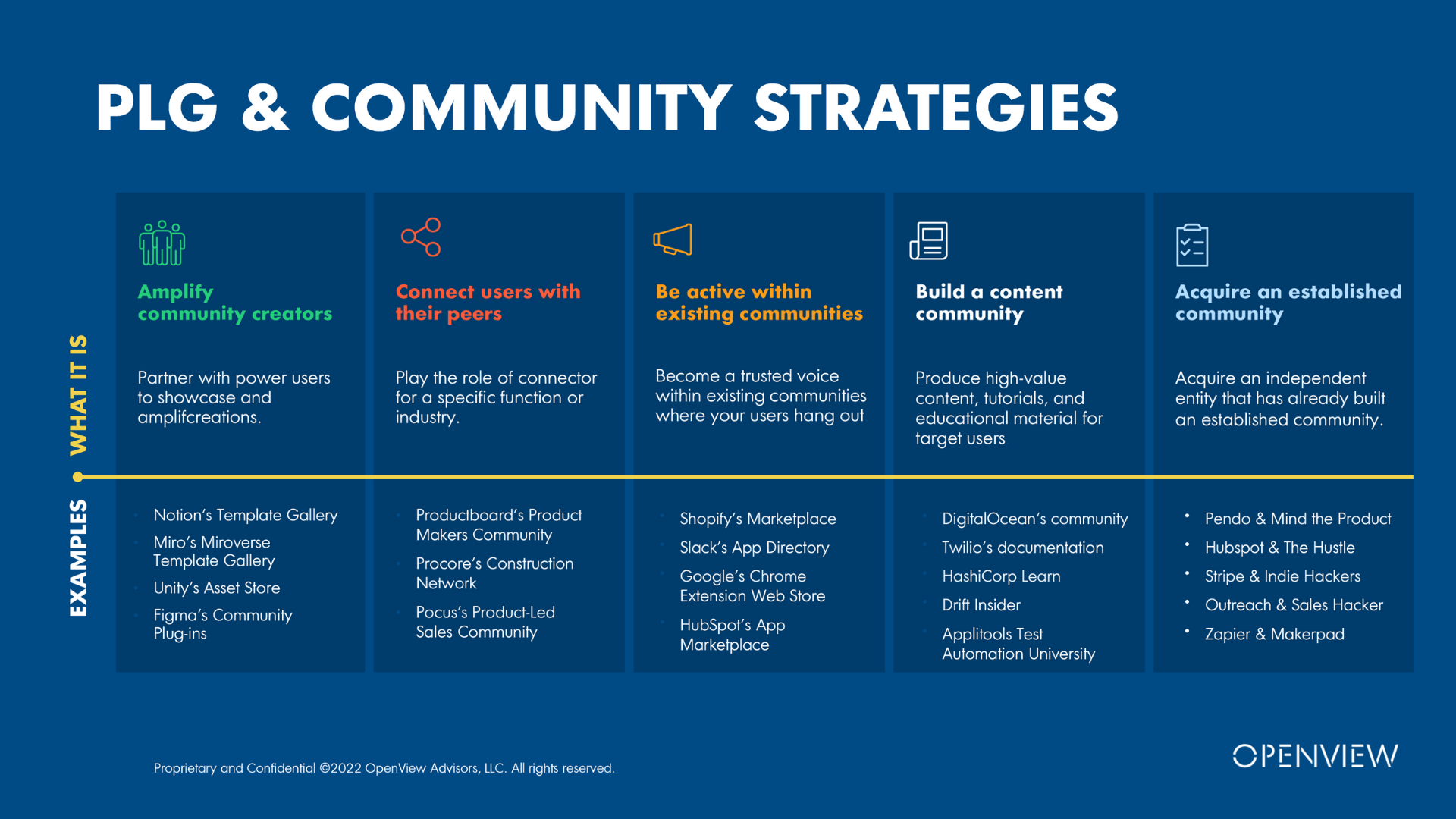
Webflow’s community of designers or Notion’s Ambassador program, community has become intertwined with product-led growth.
Principle: Build community around your product, offering users connection, belonging and inspiration.
More from Webflow: How Webflow Pairs Self-Service and Sales for Rapid Growth
#7: Deliver instant product value
What folks consider to be instant product value is always relative to what folks expect and how you compare to your peers.
Principle: Users find success with your product as fast as possible, ideally measured in minutes and not days or weeks.
ICYMI: Meet Yamini Rangan, Chief Customer Officer at HubSpot
#8: Deliver instant customer experience
this can still mean human interactions with sales or customer support. But it can also mean in-product guides, in-app chat, bots, documentation, helper libraries, or community forums.
When developers get stuck, they turn to Google first. Snyk has invested in SEO-friendly content like detailed user documentation, onboarding guides, and an extensive self-service portal to get found for nearly any help-related topic.
Principle: Users get their issues resolved as fast as possible.
More from Peter: On Hypergrowth, Hard Decisions, and Hidden Challenges
#9: Monetize after you deliver value
If you want to deliver instant value, you have to ungate access before asking folks to pay. Ask yourself: is your free product good enough for the customers you want to attract?
JumpCloud – the identity, access, and device management software – does this by allowing new customers to try its full platform for free for their first 10 users and devices.
Principle: Deliver real value for users, then charge for the value you deliver.
#10: Monetize based on usage
Pioneered by AWS, usage-based pricing models have long been preferred by developers. Today they’re popping up everywhere from marketing (Klaviyo, Attentive) to finance (Stripe) to security (VGS) to legal (Logikcull) and even to environmental compliance (Encamp).
Principle: Your pricing is flexible and scales based on how much a customer consumes.
#11: Monetize beyond software
Software companies used to focus on building, delivering, and monetizing only software assets.
Shopify, the eCommerce platform, generated more than $1 billion in Q4 revenue6 from its Merchant Solutions business, nearly 3x as much as its software subscription business unit.
Principle: Consider alternative ways to monetize your product beyond the software itself.
The impact of the new era for PLG ATTACH
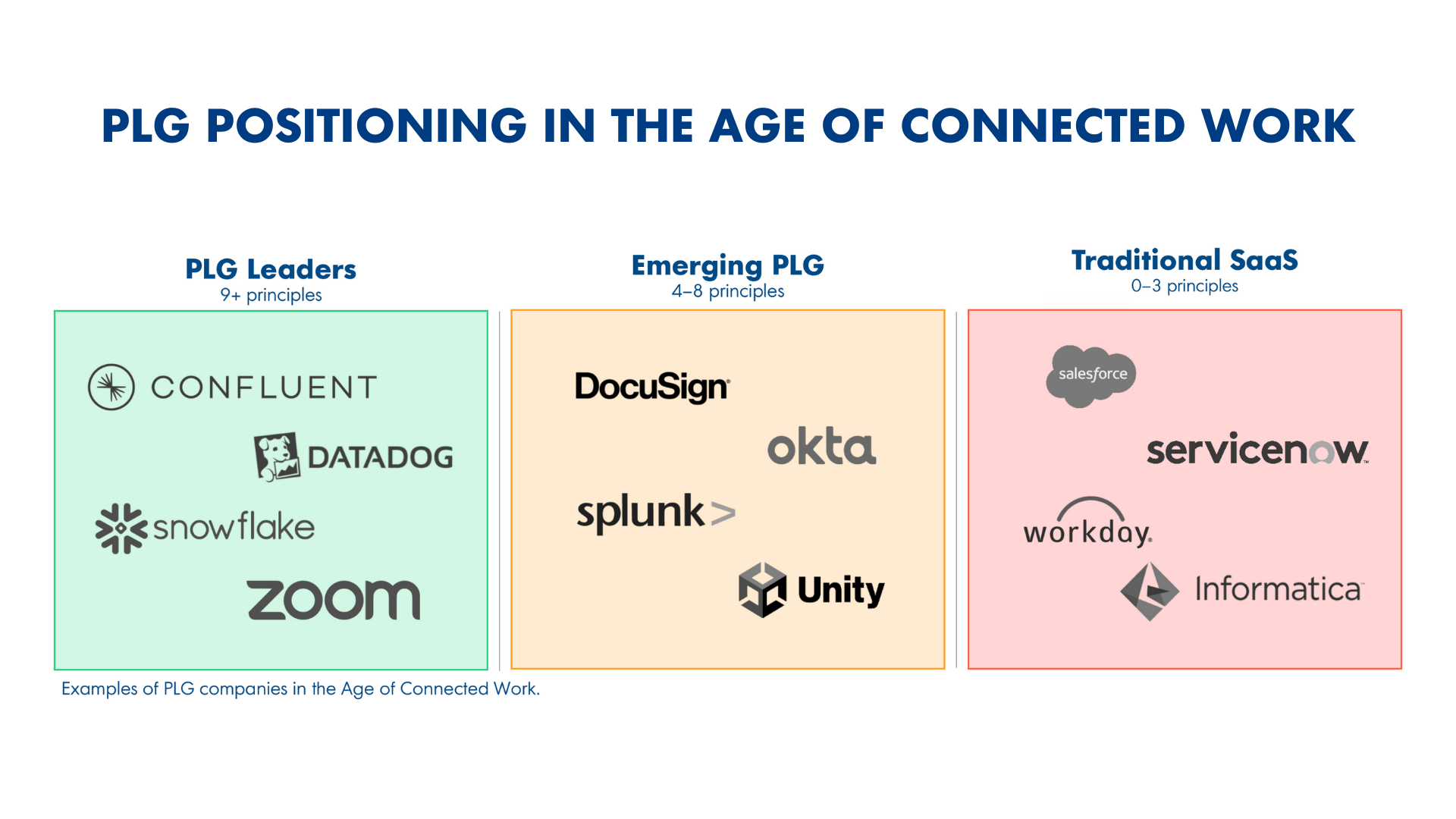
The leaders have adopted at least nine of the eleven PLG principles and include software standouts like Snowflake, Datadog, HashiCorp, Confluent, DigitalOcean, and Zoom. These mature companies have a median EV/revenue multiple of 15.7x, according to an OpenView analysis using data from Pitchbook as of May 9, 2022. PLG leaders are growing at 50% year-over-year, driven by industry-leading net retention rates (128%). These metrics far exceed traditional SaaS companies who grow at just 21% year-over-year and see 114% net retention.
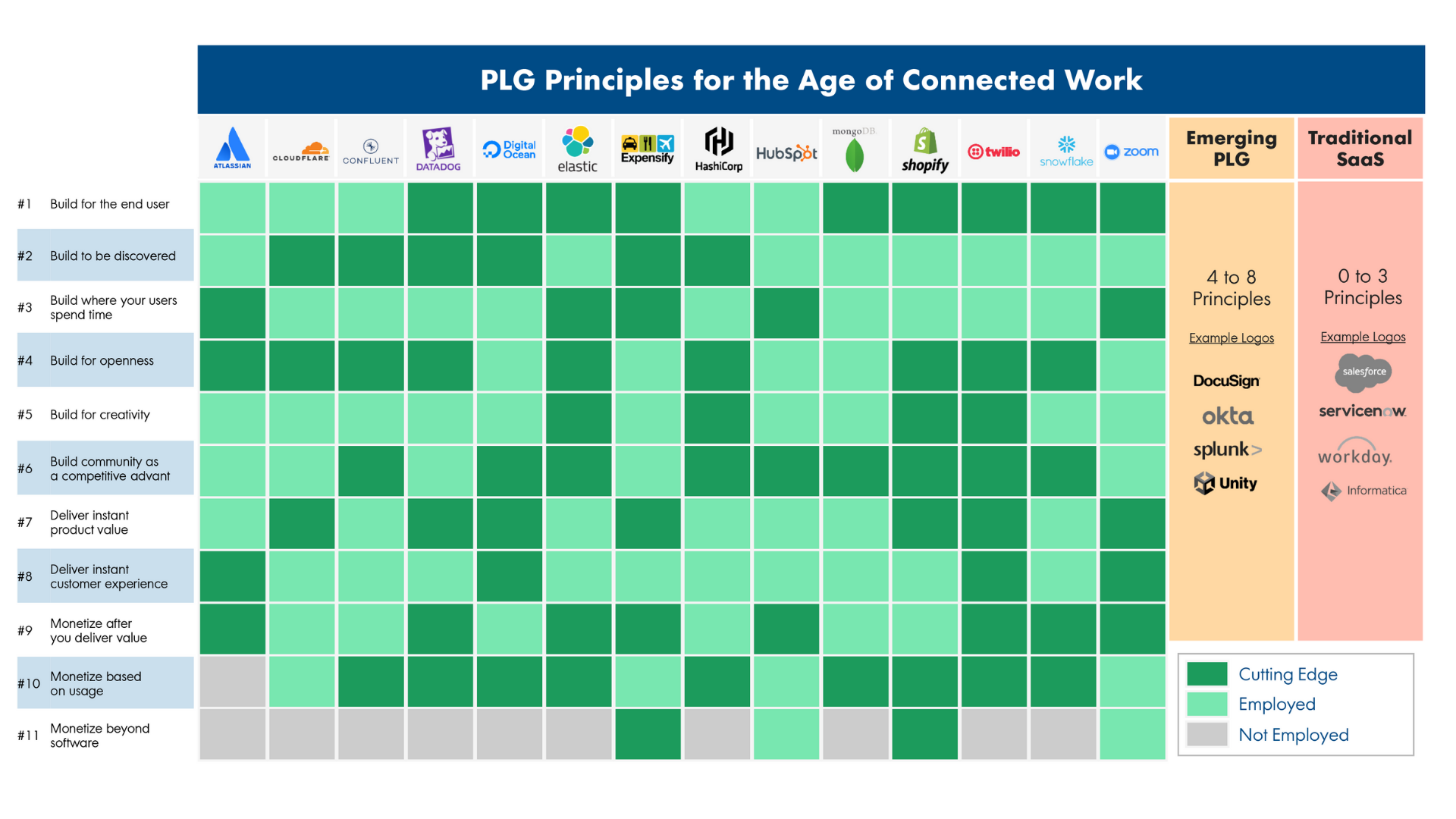
If we compare the leaders to their traditional SaaS peers, the differences are stark. PLG leaders are trading at nearly 2x the EV/revenue multiple of their peers driven by faster revenue growth, better net retention, and incredibly impressive efficiency (Rule of 40).

The data is clear: PLG is the way to build a large and enduring software business in the Age of Connected Work.